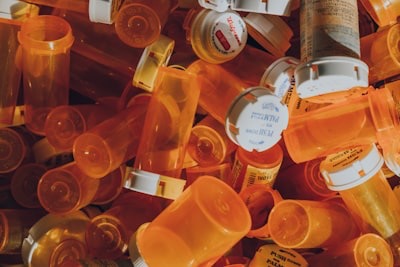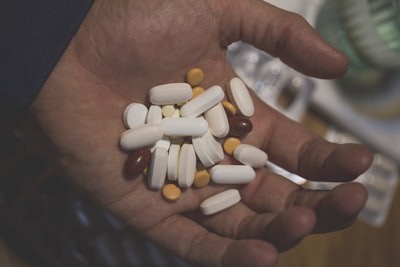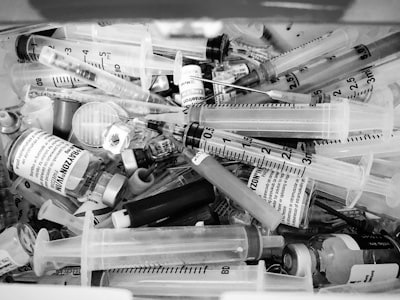Understanding Prescription Drug Abuse and Addiction
Key Highlights
- Prescription drug abuse is a growing problem in the United States, with millions of people misusing prescription drugs every year.
- Commonly abused prescription drugs include opioids, CNS depressants, and stimulants.
- Prescription drug addiction can lead to serious health problems, including overdose and death.
- Risk factors for prescription drug abuse include a history of substance abuse, mental health issues, and a of knowledge about the dangers of prescription drugs.
- Treatment options for prescription drug addiction include medication-assisted treatment and counseling.
- Prevention include education, proper disposal of unused medications, and monitoring prescription drug use.
Introduction

Prescription drug abuse and addiction have become significant public health concerns in the United States. Millions of people, both young and old, are misusing prescription drugs, leading to serious health problems and even death. It is essential to understand the scope of prescription drug abuse, the commonly abused drugs, the causes behind addiction, the signs of dependence, and the available treatment options.
Exploring the Scope of Prescription Drug Abuse

Prescription drug abuse refers to the misuse of medications for nonmedical purposes. According to the Substance Abuse and Mental Health Services Administration (SAMHSA), over 18 million Americans aged 12 and older have misused prescription drugs in the past year. This accounts for more than 6% of the U.S. population. The abuse of prescription drugs, particularly opioids, has led to a significant increase in opioid overdoses and deaths in recent years.
Defining Prescription Drug Abuse and Its Impact on Health
Prescription drug abuse involves taking medications for reasons other than their intended use or without a prescription. This can include taking higher doses than prescribed, taking someone else’s medication, or using the medication to get high. The misuse of prescription drugs, also known as “street drugs,” can have a severe impact on a person’s health, leading to serious problems. It can lead to addiction, physical health problems, mental health issues, and even overdose. Prescription drugs can affect the brain’s reward system, leading to intense cravings and a loss of control over drug use. Over time, this can result in dependence and addiction.
Identifying Commonly Abused Prescription Drugs
Several classes of prescription drugs are commonly abused. Opioids, such as oxycodone and hydrocodone, are often misused for their pain-relieving and euphoric effects. CNS depressants, including benzodiazepines like Xanax and Valium, are used to treat anxiety and sleep disorders but can cause sedation and relaxation when misused. Stimulants, such as Adderall and Ritalin, are prescribed for conditions like ADHD but can produce feelings of increased energy and alertness when used in high doses. These drugs all affect the central nervous system, making them highly addictive and dangerous when misused. In fact, the misuse of these drugs can lead to serious complications such as coma, overdose, and other health problems related to the nervous system. It is important to note that identifying and addressing prescription drug abuse, including the potential for coma, is crucial in preventing these dangerous outcomes.
Unveiling the Causes Behind Prescription Drug Addiction

Understanding the causes behind prescription drug addiction is crucial in developing effective prevention and treatment strategies. The misuse of prescription drugs can often start innocently, with a person taking medications as prescribed. However, various factors can contribute to the development of addiction. These include genetic predisposition, a history of substance abuse, mental health issues, and environmental factors. Additionally, certain drugs, such as opioids, can lead to physical dependence and addiction more quickly than others.
How Prescription Medications Become a Pathway to Addiction
Prescription medications can become a pathway to addiction through various mechanisms. When taken as prescribed, these medications can provide relief from pain or other symptoms. However, over time, the body may develop a tolerance to the drug, requiring higher doses to achieve the same effect. This can lead to physical dependence, where the body relies on the drug to function normally. When a person tries to stop using the drug or reduce their dosage, they may experience withdrawal symptoms, which can be highly uncomfortable or even dangerous. Additionally, some individuals may misuse prescription medications by taking higher doses or combining them with other substances to achieve a euphoric high.
The Role of Prescription in the Opioid Epidemic
Prescription opioids have played a significant role in the ongoing opioid epidemic in the United States. The increased prescribing of these medications, often for the management of chronic pain, has led to a sharp rise in opioid misuse, addiction, and overdose deaths. According to the National Institute on Drug Abuse, about 21 to 29 percent of patients prescribed opioids for chronic pain misuse them, and between 8 and 12 percent develop an opioid use disorder. The misuse of prescription opioids, also known as opioid painkillers, can lead individuals to turn to illicit opioids, such as heroin, when their prescription supply runs out or becomes too expensive. This highlights the importance of proper education and regulation of prescription opioids for severe pain, as they can have dangerous side effects and contribute to the ongoing opioid epidemic.
Recognizing the Signs of Prescription Drug Dependence
It is important to recognize the signs of prescription drug dependence to intervene early and prevent further harm. Behavioral symptoms may include changes in mood, irritability, secrecy, and a preoccupation with obtaining and using drugs. Physical symptoms can include changes in appetite, weight loss or gain, changes in sleep patterns, and increased or decreased blood pressure and heart rate. Additionally, psychological signs, such as anxiety, depression, and panic attacks, may indicate the development of addiction.
Behavioral and Physical Symptoms of Abuse
Abusing prescription drugs can lead to various behavioral and physical symptoms. Behavioral symptoms may include changes in mood, such as increased irritability or agitation, secrecy, and a preoccupation with obtaining and using drugs. Physical symptoms can include changes in appetite, resulting in weight loss or gain, changes in sleep patterns, and an increase or decrease in blood pressure and heart rate. Stimulant abuse, in particular, can also cause heart problems, seizures, panic attacks, paranoia, and violent behavior. These risks increase when stimulants are mixed with other medicines, even ones that can be bought without a prescription, like cold medicines. Additionally, stimulant abuse can lead to an increase in brain activity, causing euphoria, aggressiveness or hostility, paranoia, hallucinations, reduced appetite, rapid heart rate, and dilated pupils. It is important to recognize these symptoms as they may indicate the development of addiction or dependence on stimulant abuse and can have serious consequences on brain activity and overall health.
The Psychological Signs of Addiction
Prescription drug addiction can also manifest in psychological signs and symptoms. Individuals may experience changes in their mental health, including increased anxiety, depression, and panic attacks. They may also struggle with sleep disturbances, such as insomnia or disrupted sleep patterns. These psychological symptoms can significantly impact a person’s overall well-being and quality of life. It is crucial to seek help and support if you or someone you know is exhibiting these signs, as professional treatment and intervention can make a significant difference in recovery.
Addressing the Risks: Who is Most Vulnerable?
Certain populations may be more vulnerable to prescription drug abuse and addiction. Young people, including teenagers and young adults, are at a higher risk due to factors such as peer pressure, curiosity, and a lack of knowledge about the dangers of prescription drugs. Family members of individuals with a history of substance abuse are also at an increased risk. Additionally, certain risk factors, such as a history of mental health issues or a lack of awareness about the risks of prescription drugs, can contribute to the likelihood of developing addiction.
Risk Factors Contributing to Prescription Drug Abuse
Several risk factors contribute to prescription drug abuse and addiction. Young adults, particularly those in their late teens and early twenties, are more likely to engage in prescription drug misuse. Family members with a history of substance abuse also increase the risk of prescription drug abuse among individuals. Other risk factors include a personal or family history of mental health issues, a lack of awareness about the potential dangers of prescription drugs, and easy access to prescription medications. Understanding these risk factors is crucial in implementing preventive measures and providing appropriate support to individuals at risk.
Preventive Measures to Mitigate Risk
Prevention plays a critical role in mitigating the risk of prescription drug abuse and addiction. Education is key in raising awareness about the risks and consequences of prescription drug misuse. Healthcare providers can play a crucial role in ensuring that patients receive accurate information about their medications and their potential risks. Proper disposal of unused medications is also important to prevent misuse. Additionally, monitoring prescription drug use, particularly among young people, can help identify and address potential issues early on. Implementing comprehensive prevention programs that include education, awareness campaigns, and community support can make a significant impact in reducing prescription drug abuse.
Navigating Through Treatment Options
When addressing prescription drug addiction, it is essential to consider the available treatment options. Detoxification, or the process of removing the drug from the body, is often the first step. This may be done under medical supervision to ensure safety and manage withdrawal symptoms. Rehabilitation programs, both inpatient and outpatient, can provide comprehensive support and therapy to address the underlying causes of addiction. Support systems, such as counseling, support groups, and aftercare programs, are crucial in maintaining long-term recovery and preventing relapse. It is important to note that medications used in treatment for substance use disorders are approved by the Food and Drug Administration (FDA) and are clinically driven and tailored to meet each patient’s needs.
Detoxification and Rehabilitation Programs
Prescription drug abuse can lead to physical dependence and addiction. When someone decides to stop using the drugs, they may experience withdrawal symptoms. Detoxification programs are designed to help individuals safely manage these withdrawal symptoms. These programs provide medical supervision and support to ensure the individual’s safety and comfort during the detoxification process.
After detoxification, rehabilitation programs are essential for addressing the psychological and behavioral aspects of addiction. These programs provide counseling, therapy, and support to help individuals understand the underlying issues that contribute to their drug abuse and develop healthy coping mechanisms. Rehabilitation programs may be inpatient or outpatient, depending on the individual’s needs and severity of addiction.
The Importance of Support Systems in Recovery
Recovering from prescription drug addiction is a challenging process that requires ongoing support. Family members, friends, and support groups play a crucial role in providing emotional support and encouragement throughout the recovery journey. They can help individuals stay motivated, offer a listening ear, and provide a safe and supportive environment.
Mental health support is also vital in recovery. Many individuals struggling with prescription drug addiction may have underlying mental health issues that contribute to their substance abuse. Treating these co-occurring disorders is essential for long-term recovery. Mental health professionals can provide therapy, medication management, and support to help individuals address their mental health needs.
Strategies for Prevention and Education
Preventing prescription drug abuse requires a multi-faceted approach that includes public awareness, education, and policy changes. By implementing these strategies, we can reduce the initiation of prescription drug abuse and promote safer medication practices.
Raising Awareness and Educating the Public
Raising public awareness about the dangers of prescription drug abuse is crucial in preventing its onset. Public awareness campaigns can educate individuals about the risks of prescription drug misuse, the signs of addiction, and available resources for treatment and support. These campaigns can be conducted through various channels, including media, school programs, and community events.
Education about prescription drugs should start at an early age. Schools can incorporate drug education programs that teach students about the dangers of prescription drug abuse, responsible medication use, and the importance of seeking help for substance abuse issues. Healthcare providers can also play a role in educating their patients about the risks associated with prescription medicines and the importance of following prescribed instructions. Raising awareness and educating the public about the dangers of prescription drug abuse is crucial in preventing and addressing this growing issue. It is important to properly dispose of unused prescription medicines and to only use them as prescribed by a healthcare professional. By properly educating ourselves and our communities about the risks of prescription medicines, we can help prevent addiction and misuse of these powerful drugs.
Policy Changes and Their Role in Prevention
Policy changes at the local, state, and national levels can play a significant role in preventing prescription drug abuse. These changes may include implementing prescription drug monitoring programs, enhancing regulations for prescribing opioids, and increasing penalties for illegal prescription drug distribution.
Furthermore, policy changes can focus on improving access to addiction treatment services, including medication-assisted treatment, counseling, and support programs. By removing barriers to treatment and making it more accessible, individuals struggling with prescription drug addiction can receive the help they need to recover.
The Role of Healthcare Providers in Curbing Abuse
Healthcare providers play a crucial role in preventing and addressing prescription drug abuse. Through responsible prescribing practices and close monitoring of patient medications, healthcare providers can help reduce the risk of addiction and misuse.
Best Practices for Prescribing Medications
When prescribing medications, healthcare providers should follow best practices to ensure safe and appropriate use. This includes conducting a thorough assessment of the patient’s medical history, monitoring for signs of addiction or misuse, and providing clear instructions for medication use.
Healthcare providers should also consider non-opioid alternatives for managing pain whenever possible. Non-addictive pain management options, such as physical therapy, acupuncture, or non-opioid medications, can be explored to minimize the risk of prescription drug abuse.
Monitoring Patient Medications
Regular monitoring of patient medications is crucial to identify any signs of misuse or addiction. Healthcare providers should closely monitor patients’ medication use, assess their pain levels, and regularly evaluate the need for continued medication use.
Additionally, healthcare providers should educate patients about the risks of prescription drug abuse, proper storage and disposal of medications, and the importance of following prescribed instructions. Open communication and ongoing dialogue between healthcare providers and patients can help prevent prescription drug abuse.
Conclusion
Prescription drug abuse is a serious issue affecting many lives. Understanding the signs, risks, and preventive measures is crucial. By recognizing vulnerabilities, educating the public, and implementing policy changes, we can combat this epidemic. Support systems and treatment options play vital roles in recovery. Healthcare providers must follow best practices in prescribing and monitoring medications. If you suspect abuse, take immediate action and provide support to those in need. Together, we can work towards a healthier, drug-free society.
What are the first steps to take if you suspect drug abuse?
If you suspect someone is abusing prescription drugs, it is essential to encourage them to seek help from healthcare providers or addiction specialists. It is crucial to provide support and understanding, as addiction is a complex issue that requires professional intervention. Withdrawal symptoms and addiction can be challenging to manage on one’s own, so seeking professional help is crucial. Support systems, such as family members or friends, can play a significant role in encouraging the individual to seek help and providing emotional support throughout the recovery process.
How can friends provide support to someone struggling with addiction?
Friends and family members can offer support by listening without judgment, encouraging treatment, and providing emotional support. They can educate themselves about addiction and attend support groups or therapy sessions with the individual. It is essential to set boundaries and avoid enabling the addiction while offering love, support, and understanding.
Are there non-addictive alternatives to pain management?
Yes, there are non-addictive alternatives to pain management. These may include physical therapy, acupuncture, chiropractic care, and non-opioid medications such as nonsteroidal anti-inflammatory drugs (NSAIDs) or nerve pain medications. It is important to consult with a healthcare provider to determine the most appropriate treatment for an individual’s specific pain condition.
What legal measures are in place to combat prescription drug abuse?
Various legal measures have been implemented to combat prescription drug abuse. These include prescription drug monitoring programs that track prescribing and dispensing patterns, laws and regulations that restrict the over-prescribing of opioids, and penalties for the illegal distribution of prescription drugs. Additionally, healthcare providers are required to follow specific guidelines and protocols when prescribing controlled substances to minimize the risk of abuse.
https://order.store.mayoclinic.com/flex/mmv/incon01
https://www.cdc.gov/drugoverdose/opioids/fentanyl.html
https://www.drugabuse.gov/related-topics/trends-statistics/overdose-death-rates
https://www.fda.gov/consumers/consumer-updates/where-and-how-dispose-unused-medicines
https://www.nemours.org/locations/primary-care.html
https://drugfree.org/article/medicine-abuse-project-partners/https://public.govdelivery.com/accounts/USNIHNIDA/subscriber/new